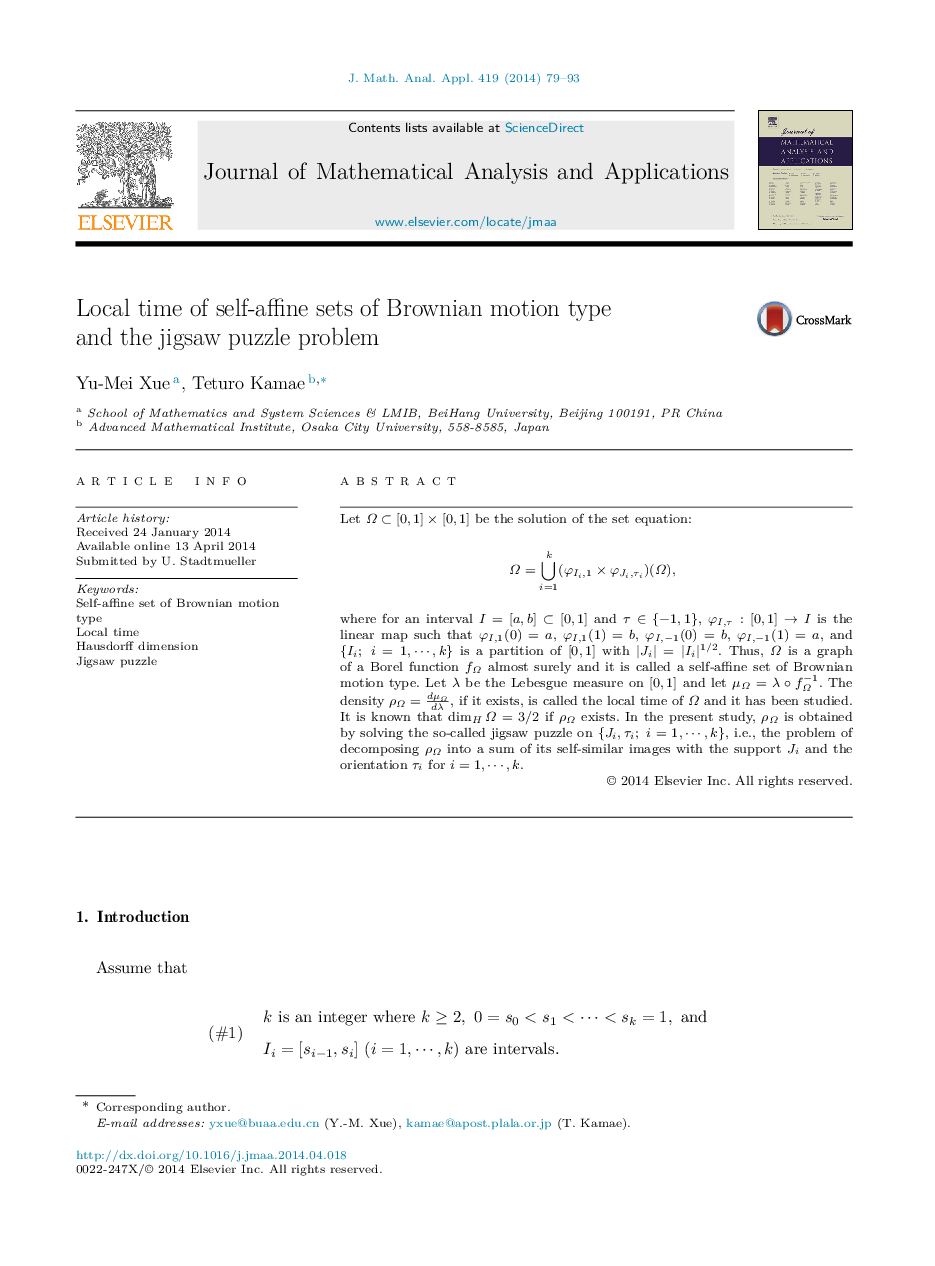| Article ID | Journal | Published Year | Pages | File Type |
|---|---|---|---|---|
| 4615738 | Journal of Mathematical Analysis and Applications | 2014 | 15 Pages |
Let Ω⊂[0,1]×[0,1]Ω⊂[0,1]×[0,1] be the solution of the set equation:Ω=⋃i=1k(φIi,1×φJi,τi)(Ω), where for an interval I=[a,b]⊂[0,1]I=[a,b]⊂[0,1] and τ∈{−1,1}τ∈{−1,1}, φI,τ:[0,1]→IφI,τ:[0,1]→I is the linear map such that φI,1(0)=aφI,1(0)=a, φI,1(1)=bφI,1(1)=b, φI,−1(0)=bφI,−1(0)=b, φI,−1(1)=aφI,−1(1)=a, and {Ii;i=1,⋯,k} is a partition of [0,1][0,1] with |Ji|=|Ii|1/2|Ji|=|Ii|1/2. Thus, Ω is a graph of a Borel function fΩfΩ almost surely and it is called a self-affine set of Brownian motion type. Let λ be the Lebesgue measure on [0,1][0,1] and let μΩ=λ∘fΩ−1. The density ρΩ=dμΩdλ, if it exists, is called the local time of Ω and it has been studied. It is known that dimHΩ=3/2 if ρΩρΩ exists. In the present study, ρΩρΩ is obtained by solving the so-called jigsaw puzzle on {Ji,τi;i=1,⋯,k}, i.e., the problem of decomposing ρΩρΩ into a sum of its self-similar images with the support JiJi and the orientation τiτi for i=1,⋯,ki=1,⋯,k.
